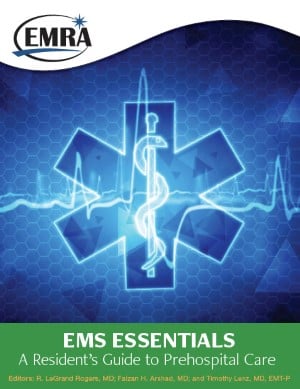Ch 5. Before My First Ambulance Ride I Wish I'd Known ...
Paradigm change: A new patient-care experience, new ways of doing things.
In the prehospital setting, the disease processes and patho- physiology of the patients we care for are the same – but the priorities, practices, and procedures are often different. Given the austere environment encountered in the provision of pre- hospital patient care, procedures should be considered entirely new activities as compared to performing them in the emergen- cy department. This is true even for familiar procedures such as peripheral IV starts, endotracheal intubation, and checking vital signs.
- Look and listen. Both for safety and learning, it is important to observe the style and teamwork of the crew you are working with. In-depth questions are often best asked/answered after the call has been completed at the hospital. EMS work occurs in a dynamic, sometimes volatile, environment – looking and listening more than you are speaking helps keep you safe.
- Have fun. EMS workers are interesting and fun people with amazing senses of humor and unbelievable stories.
- Help carry equipment. If you help with the work, the crew will have immediate respect for you as a teammate. Also, if you carry “the kit” (bag with the most equipment and medications) you can be sure you won’t be left behind on scene.
- Be ready for anything. Chest pain, complete boredom, CPR, childbirth – you might see all of these in one shift. Be sure to bring a snack in case there is no time to stop for food, and bring reading materials in case you have a slow day with a lot of downtime.
- Absorb the surroundings. You often deliver care in a 70 degree, well-lit environment with lots of resources. But EMS delivers care in extreme temperatures, on train tracks, and in shopping malls. Be sure to look around to appreciate EMS crews and where YOUR patients are coming from when they reach the ED. Also, internalize appreciation for what it takes to get patients “packaged,” extricated, and transported to the ED bed.
- Participate! Be ready to evaluate patients, help with spinal immobilization, formulate a differential, listen to breath sounds, and take manual vital signs. Need to practice with a blood pressure cuff beforehand? Don’t forget your stethoscope.
- Answer questions. You are a physician and the crew you are working with will be interested in some of the knowledge you have. Interaction with EMS is great practice at simultaneously being a teacher and a student. Never lose sight of the fact that the crew is ultimately in charge of all decisions during your time on their ambulance – they have final say and are responsible for the safety of you and the patients.
- Dress appropriately. Often third riders on an ambulance are asked to wear a white button-down shirt and black or navy blue pants. Regardless, be sure you are dressed modestly and neatly. Footwear is very important – a work boot is best. Dress shoes, slip-ons, and sandals are not appropriate from an appearance, functional, and OSHA perspective. Be prepared for changing weather – rain, wind, snow.
Consider reading People Care: Career-Friendly Practices for Professional Caregivers (Thom, Dick, et al) prior to your EMS rotation.





